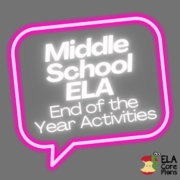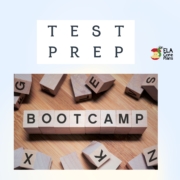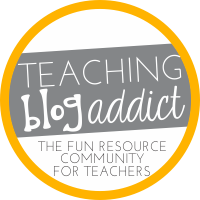Engaging Middle School ELA End the Year Activities
It’s that time of year, time for testing and winding down, so here are two fun, creative, and engaging middle school ELA end the year activities that are perfect for the last weeks of school! The first activity is called “Welcome to my Fairytale,” where students work in groups to update classic fairytales and perform skits for the class. The second activity is “Slam Poetry,” where students learn about poetic elements and write their own poems to perform. Read on to find examples and ideas for each activity and links to resources you can use to help you with these projects. These engaging activities will keep your students motivated and excited about learning until the very end of the school year!
The first engaging middle school ELA end the year activity is called “Welcome to my Fairytale.” This project is a great way to get students working in groups and using their creativity to update an original fairytale. Students will work together to write scripts, create music playlists to accompany those skits, and yes, even perform their skits for the class. Encourage your middle schoolers to think outside the box and come up with new and modern twists on classic fairytales. For example, they could update Cinderella to be set in modern-day New York City and have Cinderella and her sisters all trying to go TikTok famous. Here are a few more examples:
- The Three Little Pigs: Set the story in a cooking competition, with the three pigs as aspiring chefs who must create the best dish to win a prize. The Big Bad Wolf could be a celebrity chef who judges the competition.
- Snow White: Students could set this story in a high school or college setting, with Snow White as a popular student who becomes the target of jealousy and bullying from her classmates. Instead of the mirror on the wall, Instagram likes could tell the witch that she’s not the fairest of them all
- Rapunzel’s Locked-In Concert: Set the story in the modern world of music, where Rapunzel is a talented singer and musician who is locked in a tower by her controlling manager. She can only perform online concerts for her fans, but she dreams of performing in front of a live audience.
This is one of those projects that can take students days to prepare and practice. It’s one of those perfect middle school ELA end the year activities because your students will be excited about it and engaged, and you won’t need to have lengthy lesson plans. You’ll of course need to walk around and monitor the groups, and set some guidelines before starting to ensure that everything runs smoothly. Early finishers should keep practicing their skit to improve it. Insist that the project is never “finished early” because any extra time should be spent improving the skit. You could even suggest that if they do find themselves with extra time, to write a commercial that could be acted out halfway through the skit.
In addition to writing the script, students can complete the following:
- Create costumes ~ You can allow them to bring things from home or, you’ll be surprised what they can make from construction paper, tape, and a stapler.
- Create backdrops for the setting ~ One option is to have students make a Google slide of backdrop pictures. They can share this with you so that you can project it as their backdrop during their skit. If groups have multiple settings, they can use multiple pictures in their presentation, like a forest, a castle, etc. One student in the group can be in charge of changing the slides when needed.
- Create a soundtrack of songs to accompany the skit ~ Insist that these are school appropriate!
- Make a list of sound effects that may be needed during the skit.
We have a product in our TpT store titled Modern Day Fairy Tale Writing Activity. It has a brainstorming page called the “Fairytale Twister” that students can use as they think through the process of changing an original story into a modern one and it also provides an example of how the skit should look. In addition, it has some organizational handouts including a rubric and peer evaluation forms.
The second activity I want to share is slam poetry. Slam poetry is a style of poetry that is meant to be performed, and it’s a great way to get students engaged with language and storytelling. To start, you can show your students some examples of slam poetry from TED Talks or other sources. Next, talk about some poetic elements- those things that make poems poems… like repetition, rhyme, and imagery. Watch some more Ted Talks featuring slam poets and look for those devices in action.
After this, try performing a poem together as a class. Together, discuss ways that the poem can be “slammed”. Decide how each line could be read, which words could be said in a different way, or which words need to be emphasized. You could even have different students “come to life” at different parts of the poem as they read an assigned word or line.
Finally, students can write their own poems to perform in front of the class. You could allow them to work with a partner on this as well. Provide prompts to get them started, or encourage them to write about topics that are important to them. If you have shy students who don’t like this sort of thing, allow someone else in the class to perform their poems.
We have a unit in our TpT store titled Poetry Slam It has some Ted Talk video links, helpful handouts, sample practice poems and more!
These two middle school ELA end the year engaging activities are super fun, and there are so many ways you can customize them to fit your classroom and your students’ interests. For example, you could have your students create their own slam poetry contests, or you could have them create short films or animations to go along with their updated fairytale skits. The possibilities are endless! Have fun!





